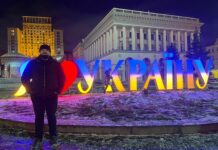Members of the HDZ in both BiH and Croatia have not given up on their dreams of a republic of Herzeg-Bosnia, which they euphemistically refer to as “the Croatian constituency” or “the third entity”.
By: Ivo Komšić
During the war, the Central Bosnia region was the key to survival for the state; and it is again today, even after the relocation of much of its population during the war and afterward. Indeed, before embarking on open aggression against BiH, Bosnian Serb leader Radovan Karadžić saw to it that Bosnian Serbs left Central Bosnia in waves. By April 1992, this process of ethnic cleansing had been completed overtly, as Serbs from Zenica, Travnik, Novi Travnik, Bugojno, Vitez, and Busovača were transferred to Ilidža (near Sarajevo) by bus, truck, tractor, and anything else that could move, with the consent of local officals from the HDZ-BiH (Hrvatska demokratska zajednica, or the Croatian Democratic Union in BiH) and the HVO (Hrvatsko vijeće obrane, or the Croatian Defence Council). This alliance between Serb and Croat leaders was so strong that Serbs traveled through majority-Croat Kiseljak with full confidence. When the conflict spread and increasingly became a war for territory, largely in response to international “peace negotiations”, the focus of military operations shifted to Central Bosnia. Croatian leader Franjo Tuđman and Serbia’s Slobodan Milošević had agreed to a policy of Croat emigration and “humane relocation” a year earlier, in their meeting in Karađorđevo. By that time, Tuđman had already sacrificed the Croats of Posavina to provide Karadžić with a corridor to Banja Luka and Knin, and had received Serb majority territories in southwestern Bosnia (Grahovo, Glamoč, and Drvar) in return.
The War for Central Bosnia
However, it would turn out that BiH could not be divided so easily by this political horse trading, as Croats from Central Bosnia had no desire to emigrate, complicating attempts to split the country into the three nationalist republics envisioned in peace talks. As the war for Central Bosnia began, Karadžić gave officials from the HDZ-BiH a May 1992 deadline to evict Croats from Sarajevo, under the threat that those who remained in the city would be harassed “like mice” along with Muslims. Though some Croats were extracted from Sarajevo in a well-organized effort that used the established Kiseljak-Stup route, most Sarajevan Croats remained in the capital. To the consternation of Tuđman, as well as Bosnian Croat leader Mate Boban, the Croats who remained included those who ran religious institutions, the diocese, the Croatian Franciscan Province, political organizations, the Croat cultural society Napredak, and humanitarian organizations and associations, and/or they were intellectuals. On top of this, Croats from across Central Bosnia also refused to emigrate. They simply did not want to leave their homes.
This non-compliance prompted the use of military tactics to achieve population movement. The HVO would trigger conflict, the Army of BiH would retaliate, and as the HVO withdrew, they would remove Croats from a territory. This happened in Travnik, Zenica, Kraljeva Sutjeska (Kakanj), and Vareš, where skirmishes were instigated only with the aim of triggering emigration, not to conquer and retain territory. In fact, territorial acquisitions by the HVO were near impossible given the size of their force in this area versus that of the Army of BiH. Croat citizens displaced in this manner from Central Bosnia either remained nearby in Kiseljak, or were transferred to Herzegovina via Serb territory. Settlements were later built for them in the Neretva valley, Šuškovo, and Bobanovo Selo.
The military pressure on Central Bosnia was a direct result of the so-called peace negotiations, which all imagined a division of BiH along ethnic lines. This encouraged a war for territory, particularly in Central Bosnia – where an ethnically mixed population remained – on the premise that the army which could occupy this area could dominate the peace talks and dictate the parameters for ending the war. Tuđman, who was only interested in reaching the Drvar-Kupres-Stolac line, left the Croats of Central Bosnia stranded. Yet when they organized and defended their territories, Tuđman was burdened and constrained by their actions nonetheless, especially after crimes were committed by these forces in the villages of Ahmići (between Busovača and Vitez) and Stupni Do (near Vareš). These and other atrocities led to a loss of international support for Tuđman, and the portrayal of Croatia as an aggressor in BiH; no longer the victims in a war against Serb aggression on its soil.
Tuđman and Croatia were on the verge of sanctions; but Bosniak leader Alija Izetbegović had a problem, too. The peace plan forged for BiH in Geneva, which divided the country into three ethnic states, meant that he also had to fight for territory in Central Bosnia. Mostar was divided between Croats and Bosniaks, Bosniaks had been expelled from Posavina (along with Croats), the fate of Bosniaks in Krajina and Bihać was uncertain, Podrinje was surrounded by enclaves that fragmented the region (Srebrenica , Žepa, and Goražde), and Sarajevo was under siege. Still, under pressure from Croats in Sarajevo, Izetbegović pulled back on attacks by the Army of BiH in the country’s center to avoid losing the loyalty of Croat members of the Bosnian Presidency. The legitimacy and legality of the state were at risk, because the Presidency was the only institution functioning under the Constitution and making decisions with legal force at the time. This essentially made the Presidency the guardian of Bosnian statehood, and with it, Bosnian sovereignty and territorial integrity. Moreover, if Croats departed the Central Bosnia region for western Herzegovina, changing the structure of the population, the path to dividing the country along ethnic lines would be unobstructed. This tenuous situation was salvaged by the Washington Agreement, which was adopted at the First General Assembly of Croats of BiH, in besieged Sarajevo, on 6 February 1994 (following votes in the assemblies of Croats of Posavina in Slavonski Brod, and of Central Bosnia and Krajina in Zagreb).
Caring for Croats in Čović’s way
The cantonal arrangement put forth in the Agreement enabled people to remain where they lived, and called for local cantonal authorities to be elected in proportion to the structure of the population. This eliminated the underlying reason for skirmishes over territory. A decentralized government would ensure the survival of the state, and everyone would still have their “own” territory.
After the war, local authorities enabled the return of internally displaced persons, and the pre-war structure of the population of much of Central Bosnia was restored. Though, for the most part, people who were relocated to Drvar, near Stolac, remain there and did not return. To this day, Croats in Central Bosnia remain strategically important to the survival of the state, and they remain at the heart of key political battles. Members of the HDZ in both BiH and Croatia have not given up on their dreams of a republic of Herzeg-Bosnia, which they euphemistically refer to as “the Croatian constituency” or “the third entity”. Yet, again, the Croats of Central Bosnia are standing in the way of ethnic division; and for this, they are openly labeled a disruptive factor vis á vis Croatian policy towards BiH. It is almost certain that if Croats in Central Bosnia did not represent this obstruction, the way would be clear for those who seek to further fragment the state. After all, the Republika Srpska is on the path to secession, and western Herzegovina is already ethnically “pure” for Croats and needs only to be formally separated through the Election Law and an amended Bosnian Constitution. Achieving this has been the single preoccupation of the HDZ in BiH and in Croatia over the last ten years.
The policy of the HDZ has in fact been clear and undisguised since 1991, when Tuđman presented his criminal intentions at a meeting on 27 December 1991. For that matter, the policy of Alija Izetbegović was also clear when he chose to mitigate violence in Central Bosnia rather than lose Croat support in the future. But Bakir Izetbegović, who succeeded him in the SDA (Stranka demokratske akcije, or the Party of Democratic Action), has not followed this lead. In Neum, during negotiations that may well decide the destiny of BiH, he accepted the proposal of HDZ leader Dragan Čović to amend the Election Law as it relates to the House of Peoples of the Federation of BiH. The House is the most crucial government institution because it elects the President and Vice Presidents of the Federation, as well as the Federal Government and the state-level House of Peoples. To ensure dominance for himself and the HDZ, Čović’s plan would prevent one ethnic group from electing representatives from another group to government.
According to his formula, a Croat from a canton in which they are a minority could never be a member of the House, because even if they received sufficient votes, they would be considered an illegitimate candidates and any votes for them would be annulled. In other words, the vote of Croats from Sarajevo, Tuzla, and Zenica will be worth less than the vote of Croats from municipalities with a Croat majority. Čović frames this as equality and democracy for Croats. But such a constitutional-legal change only makes the position of Croats in Central Bosnia more difficult. On top of this, animosity towards other groups is fueled constantly by the rhetoric of officials in Croatia and from members of the HDZ-BiH. While Croats in Central Bosnia endured every hardship of the war and managed to remain, they may not tolerate aggression against their neighbors now. Instead, many may flee, which makes hate itself a political strategy of emigration.
Izetbegović’s legitimization of Čović’s and Dodik’s policies
Bakir Izetbegović knows this, and agreed not long ago that the state of BiH cannot survive without the Croats of Central Bosnia. Nevertheless, he has accepted and legitimized the proposals of Čović, and has done so against a backdrop of US sanctions on Bosnian Serb leader Milorad Dodik for overthrowing the constitutional order of BiH and violating the Dayton Agreement, at a time when European commitment to a European path for BiH is on the table. Izetbegović is throwing the American-European initiative to the wolves by legitimizing the policy goals of Čović and Dodik and presenting them as plausible solutions to a crisis produced by those very same goals, and has shifted the focus of the US and Europe from sanctions to “open and friendly” negotiations. According to Izetbegović, there is no reason for hostility among the peoples of BiH; as if the crimes of the 1990s did not occur, and as if the policy proposals of Čović and Dodik are not destructive and potentially devastating.
It seems that Bakir Izetbegović fails to appreciate, or does not want to accept, that those with whom he is negotiating, including Čović, are part of the “Serb world” and are therefore part of the “Russian world”; and its clutches cannot be evaded. Even if Izetbegović gained “Bosniak territory” through the emigration of Croats from central Bosnia, this would only lead to a tightening of the screws from Zagreb and Belgrade, to the point where they would become one. Who could survive? Central Bosnia (and other areas with Bosniak majorities) would become the Gaza of Europe, or in more familiar terms, Bosnia’s own 1980s-era Kosovo. There are already demands being made publicly in Croatia for a strenthening of the border with BiH, the introduction of visa requirements for Bosniaks entering Croatia, the confiscation of Croatian passports, and so on.
Hence, the confidence displayed by Bakir Izetbegović is concerning. While Čović has admitted defeat and Dodik refuses to give up on the secession of the Republika Sprska, Izetbegović remains an optimist when it comes to the fate of BiH, claiming that considerable progress was made during negotiations in Neum and that talks can continue without mediators. One must ask, on what basis? And, on what basis was anything agreed to in Neum? According to Izetbegović, consensus was reached regarding changes to how delegates are elected to the House of Peoples of the Federation, but despite the assertions of Čović, many Bosnian Croats feel these changes would deepen their sense of marginalization. Is this the point? Are they meant to feel that the only solution is emigration?
We must hope that the Croats of Central Bosnia are tougher and more stubborn than the architects of these policies believe they are. Having survived the war, it is conceivable that they can withstand these pressures, too. And, just as their role was once vital in preventing the division of BiH, it is vital now in enabling the country to move as one towards Europe.
About the author:
Ivo Komšić is a sociologist and politician from Bosnia and Herzegovina. He received his doctorate in 1985 at the Faculty of Philosophy, University of Sarajevo, and since 1977 he has been teaching at the Faculty of Mechanical Engineering, then since 1979 at the Faculty of Philosophy. Since 1990 he has been an associate professor, and since 2000 a full professor of industrial and political sociology. In 1993 he was the founder and president of the Croatian Peasant Party of BiH, then a member of the Presidency of BiH (1993-1996), co-founder (1994) and president of the Croatian National Council of BiH (1994-2003), vice president of the Social Democratic Party of BiH (2001-2002) and president of the House of Peoples of the Federal Parliament of BiH (2000–2002). From 2013 to 2017 he was the mayor of Sarajevo. He is the author of sveral books, including: Dialectics of Commodity Form (1987) and Automation and Humanization (2000). His most recent book Tuđman’s Hague Profile – Joint Criminal Enterprise in BiH was published in 2021.








